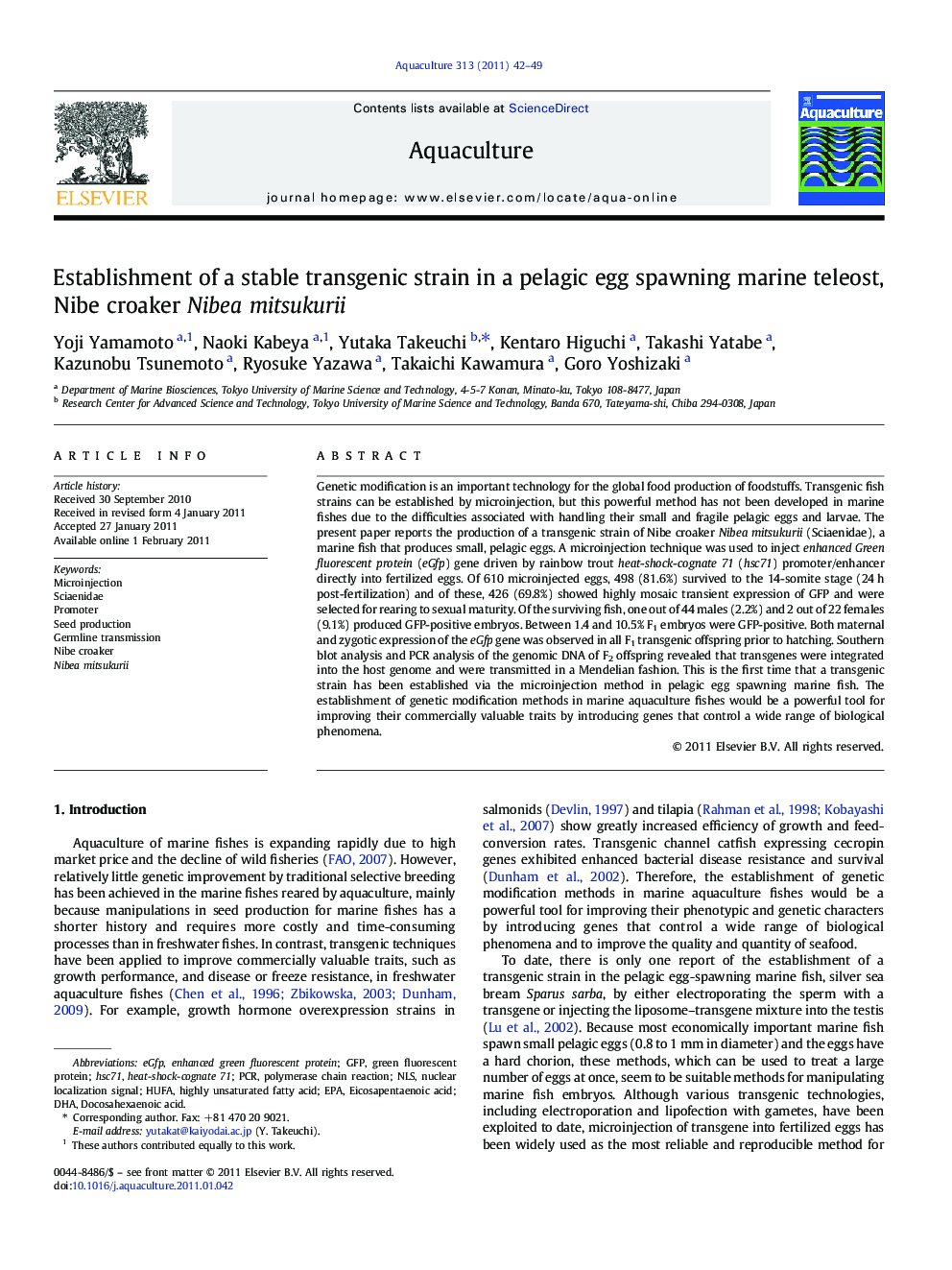| Article ID | Journal | Published Year | Pages | File Type |
|---|---|---|---|---|
| 2423318 | Aquaculture | 2011 | 8 Pages |
Genetic modification is an important technology for the global food production of foodstuffs. Transgenic fish strains can be established by microinjection, but this powerful method has not been developed in marine fishes due to the difficulties associated with handling their small and fragile pelagic eggs and larvae. The present paper reports the production of a transgenic strain of Nibe croaker Nibea mitsukurii (Sciaenidae), a marine fish that produces small, pelagic eggs. A microinjection technique was used to inject enhanced Green fluorescent protein (eGfp) gene driven by rainbow trout heat-shock-cognate 71 (hsc71) promoter/enhancer directly into fertilized eggs. Of 610 microinjected eggs, 498 (81.6%) survived to the 14-somite stage (24 h post-fertilization) and of these, 426 (69.8%) showed highly mosaic transient expression of GFP and were selected for rearing to sexual maturity. Of the surviving fish, one out of 44 males (2.2%) and 2 out of 22 females (9.1%) produced GFP-positive embryos. Between 1.4 and 10.5% F1 embryos were GFP-positive. Both maternal and zygotic expression of the eGfp gene was observed in all F1 transgenic offspring prior to hatching. Southern blot analysis and PCR analysis of the genomic DNA of F2 offspring revealed that transgenes were integrated into the host genome and were transmitted in a Mendelian fashion. This is the first time that a transgenic strain has been established via the microinjection method in pelagic egg spawning marine fish. The establishment of genetic modification methods in marine aquaculture fishes would be a powerful tool for improving their commercially valuable traits by introducing genes that control a wide range of biological phenomena.
